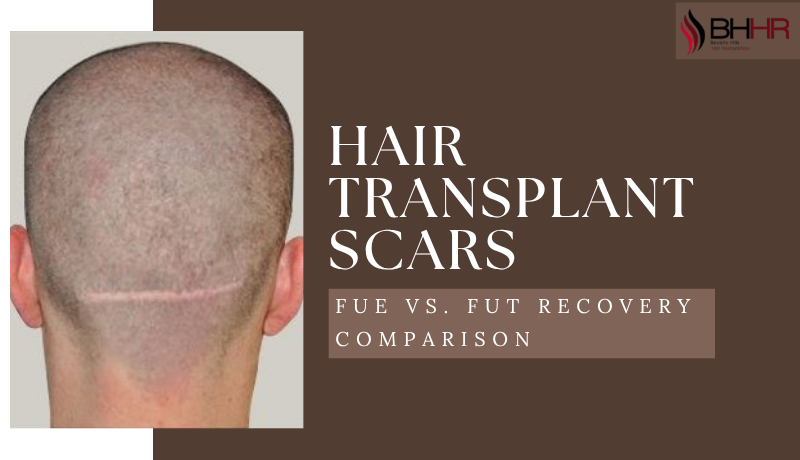Notifications

7 minutes, 43 seconds
-185 Views 0 Comments 0 Likes 0 Reviews

Hair restoration is a life-changing journey for many, offering renewed confidence and a refreshed appearance. But while people often focus on hair regrowth, one critical aspect that's equally important—yet frequently overlooked—is hair transplant scars. Whether you're considering Follicular Unit Extraction (FUE) or Follicular Unit Transplantation (FUT), understanding how each method affects your scalp, particularly regarding scarring and recovery, can shape your final decision. Scars are a natural part of healing, but vary depending on the surgical approach. So, if you're trying to decide between FUE and FUT, it's crucial to dig deeper into how each procedure leaves its mark—literally and figuratively. Let’s walk you through a clear, informative comparison to help you set realistic expectations and make confident choices.
Hair transplant scars form from tiny incisions or excisions made during FUE or FUT procedures. While both methods extract hair follicles from a donor area, how they're harvested affects scar type and visibility. Thanks to modern techniques, today’s procedures significantly reduce scarring, making it far less noticeable than in the past. However, "less noticeable" doesn’t mean invisible. Understanding this difference is essential when deciding which hair transplant method is right for your goals and lifestyle.
Follicular Unit Extraction (FUE) is a popular hair transplant method due to its minimally invasive approach. Instead of removing a strip of scalp, the surgeon uses a tiny punch tool to extract hair follicles individually, typically 0.6mm to 1mm in diameter. This results in many tiny circular scars across the donor area. These scars are generally difficult to detect, especially if the hair is kept slightly long, making FUE ideal for those who prefer shorter hairstyles. However, it's important to note that overharvesting can lead to patchiness or visible pitting. While FUE offers less noticeable hair transplant scars, the surgeon's expertise is critical to the outcome.
Follicular Unit Transplantation (FUT), commonly known as the "strip method," involves extracting a thin strip of scalp from the back of the head to harvest hair follicles. This technique results in a single, horizontal linear scar in the donor area. While it can be concealed under longer hair, it's more visible with shorter hairstyles or shaved heads. Despite this, FUT offers a key benefit: the ability to harvest more grafts in one session, which is ideal for extensive hair loss. Skilled surgeons using modern suturing techniques can minimize the scar’s thickness and appearance. However, the line will remain, making it a critical factor for anyone concerned about hair transplant scars.
The healing process also differs between FUE and FUT, much of which ties back to the type of scar you're left with.
FUE recovery is generally smoother because the procedure is less invasive. Patients often experience minimal post-operative pain, and the tiny scabs that form usually heal within 7 to 10 days. Since the technique involves micro-incisions, there's also a lower risk of infection. These factors contribute to a quicker and more comfortable healing process overall. Most individuals can return to regular daily routines just a few days after the procedure, which makes FUE a popular choice for those with busy or active lifestyles.
FUT recovery is generally more intensive because it involves a larger, linear incision that requires sutures or staples. This type of wound needs more healing time compared to FUE. Patients often experience increased discomfort during the initial recovery phase, and it typically takes around 10 to 14 days before the stitches can be removed. Due to the nature of the incision, post-operative care must be more cautious. There’s also a higher chance of experiencing tightness or numbness in the donor area as the scalp heals.
Yes, and that’s an essential part of your planning. Several treatments can reduce the visibility of hair transplant scars, including:
No matter what treatment you choose, always consult with a hair transplant specialist to find the best option for your skin type and scarring pattern.
Scars aren’t just marks—they’re part of your hair restoration story. Whether you go for FUE or FUT, understanding the nature of hair transplant scars prepares you for what lies ahead. While no technique can promise a completely scar-free result, today’s advanced methods come incredibly close. Choosing the right method and surgeon can make all the difference between a visible reminder and a subtle footprint of your transformation. It’s not about avoiding scars entirely—it’s about making sure the ones you have don’t steal the spotlight from your new, fuller hair. Your journey to hair restoration is deeply personal. Equip yourself with knowledge, ask informed questions, and make a thoughtful decision. Because at the end of the day, confidence isn’t just about hair—it’s about how you wear your story, scars and all.

